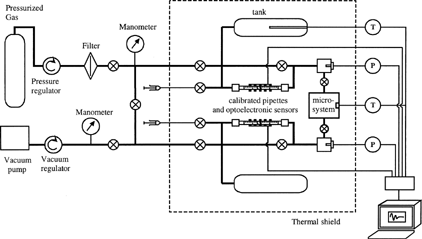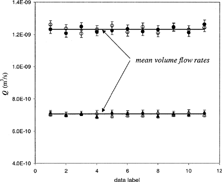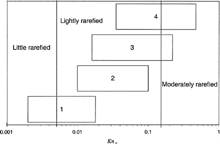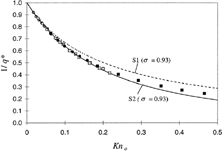Figures & data
FIG. 3 (a) Top view of the microchannels etched in a silicon wafer (b) and front view of the wafer with its outer connections.
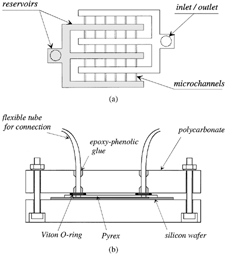
TABLE 1 Characteristics of the tested microchannels
FIG. 5 Theoretical and experimental mass flow rates. Wafer n°1, 2h = 4.48 μm, T = 294.2 K. a) gas: N2, 0.002 ≤ Kn o ≤ 0.008, P o = 1.9 · 105 Pa; b) same conditions, comparison between plane and rectangular models; c) gas: N2, 0.005 ≤ Kn o ≤ 0.018, P o = 0.82 · 105 Pa.

FIG. 6 Theoretical and experimental mass flow rates. Wafer n°2, 2h = 1.88 μm, T = 294.2 K. a) gas: N2, 0.01 ≤ Kn o ≤ 0.017, P o = 2 · 105 Pa; b) gas: N2, 0.027 ≤ Kn o ≤ 0.053, P o = 0.65 · 105 Pa; c) gas: He, 0.029 ≤ Kn o ≤ 0.053, P o = 1.9 · 105 Pa; d) gas: He, 0.05 ≤ Kn o ≤ 0.1, P o = 1.026 · 105 Pa.
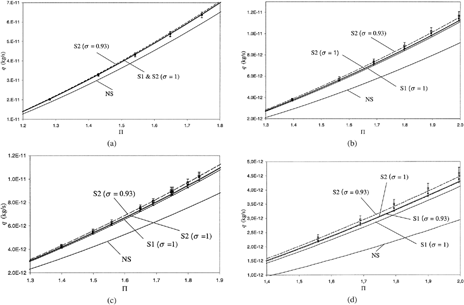
FIG. 7 Theoretical and experimental mass flow rates. Wafer n°3, 2h = 1.16 μm, T = 294.2 K. a) gas: N2, 0.016 ≤ Kn o ≤ 0.03, P o = 1.9 · 105 Pa; b) gas: N2, 0.04 ≤ Kn o ≤ 0.09, P o = 0.65 · 105 Pa; c) gas: He, 0.05 ≤ Kn o ≤ 0.09, P o = 1.9 · 105 Pa; d) gas: He, 0.1 ≤ Kn o ≤ 0.22, P o = 0.75 · 105 Pa.

